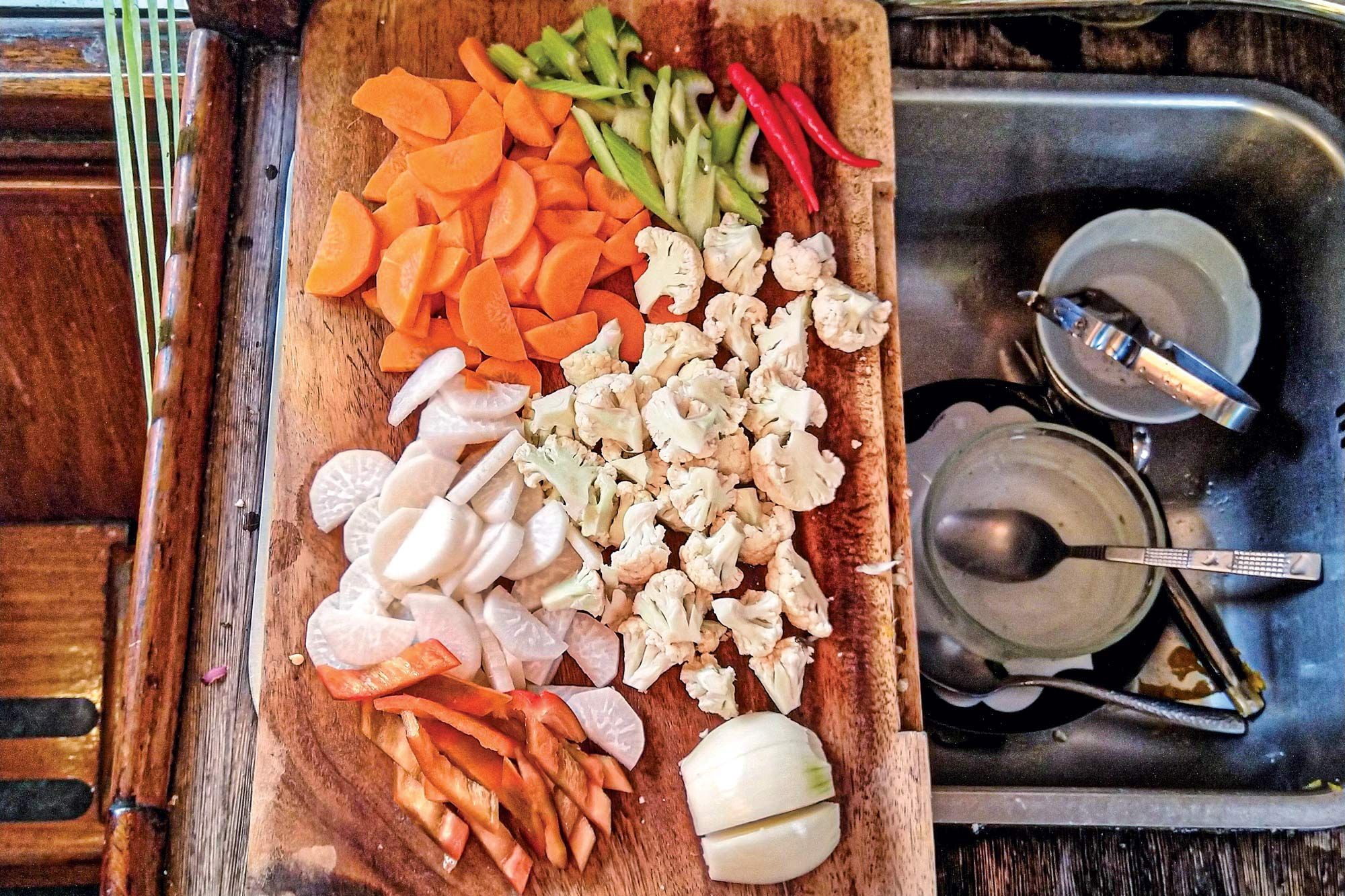The United Nations estimates that 1.5 billion tons, or one-third of all food produced, is wasted annually. It is also estimated that more than 40 percent of that food is wasted by the consumer. What you put on your plates has far-reaching environmental consequences, and that means you have the power to make big, positive environmental changes. On a more personal level, reducing food waste means less stinky trash to deal with on board.
Reducing food waste doesn’t mean going vegan or giving up favorite foods. It doesn’t even require major changes to your routine. Simply by being a little more mindful about the food you buy and eat can help prevent global food waste.
Use What’s on Board: The first step toward reducing food waste is simply to use what you have on board instead of heading ashore to buy more. Start by checking what fresh goods need to be eaten before they spoil, and build your meal from there. Sometimes this means creative substitutions, but cooking is about the creative process—embrace it. This is also a good opportunity to rotate stock and check expiration dates on canned goods in the dry stores.
Make a Plan and Stick to It: Taking a few minutes each week to create a meal plan and a provisioning list is a great strategy to reduce food waste, not to mention stress. Arming yourself with a list when heading out to provision means you can reduce impulse purchases and avoid doubling up on things you already have on board. Buying only the food you need means your shopping trip will be time- and cost-effective.
A great way to reduce food waste? Get creative! Use up what you have already on board before shopping for more.Heather Francis
Eat Ugly: Approximately 46 percent of produce never makes it from the farm to the galley simple because of cosmetic preferences. Apples that aren’t big enough, carrots that aren’t straight enough and lemons that aren’t yellow enough are all thrown away despite being perfectly nutritious. “Eating ugly” is accepting that nature is not cosmetically perfect, and that produce grows in all sorts of shapes, sizes and colors. Small producers and farmers markets are likely to have more variety when it comes to cosmetically imperfect fruits and veggies. As well, check for the “ugly”—and often discount—produce section in conventional stores. Save a few pennies, and the planet too!
Shop Local vs. Organic: Many people choose organic over locally grown, thinking that it is a better choice for the environment. However, it is important to consider farming practices, shipping distances and packaging when choosing your food. Buying something organic that is from an industrial farm, wrapped in plastic and shipped to a remote island will have greater negative environmental impact than choosing locally grown but not certified-organic food.
Eat Sustainably: Eating sustainably asks that we consider where and how our food is grown, the resources used, the environmental impact of the entire process, the conditions of the animals, and how the workers are treated and paid. You can eat sustainably by reducing your meat consumption, choosing wild-caught instead of farmed fish, eating seasonally, buying local, buying fair trade, growing or making your own, and eating less packaged and processed foods.
This article was written by Heather Francis from Cruising World and was legally licensed through the Industry Dive publisher network. Please direct all licensing questions to legal@industrydive.com.
![]()





